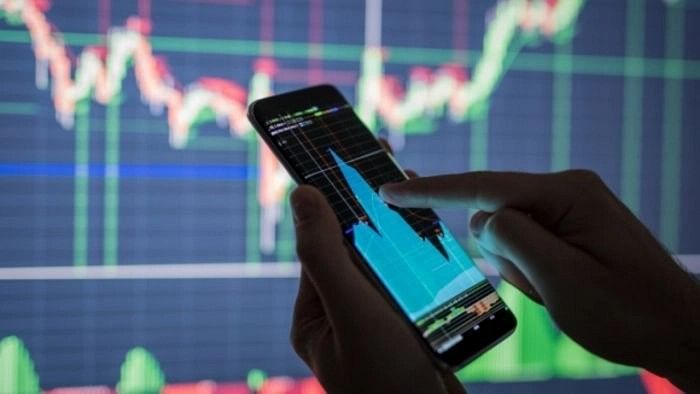
Representative image showing a stock market digital graph.
Credit: iStock Photo
The stock markets by nature are volatile. In the run-up to general elections, or ahead of major events like the Union Budget, this volatility gets even more pronounced. This is evident from the recent fluctuations in the Indian equities. While benchmark indices like Sensex and Nifty 50 show the movement in price of the underlying constituent stocks, the volatility index is a reflection of what is in store for the market in the near term. In this issue of DH Deciphers, Gyanendra Keshri decodes the India Volatility Index (VIX), recent fluctuations and its relevance in the election season.
What is the Volatility Index?
The Volatility Index or VIX is a key measure of the stock market’s expectation of volatility. It is often referred to as the market’s “fear index” or “fear gauge”. The performance of the volatility index is inversely related to the benchmark indices. This means when the price of the volatility index goes up, the price of the indices like Sensex and Nifty usually goes down. The volatility index is calculated from the prevailing index option prices. If the volatility index is rising, demand for options is increasing, and therefore, becoming more expensive. On the other hand, a decline in the volatility index shows that there is less demand, and options prices tend to fall.
What is the India Volatility Index?
India Volatility Index or India VIX calculates stock market volatility in India using the Nifty 50 index. The National Stock Exchange (NSE) started trading of futures contracts based on the India Volatility Index in February 2014. The India VIX is calculated by the NSE using Nifty options’ order book. India VIX and Nifty 50 index are negatively correlated. This means, normally they move in opposite directions. When the Nifty 50 index rises, the volatility index generally goes down. Decline in volatility index is normally accompanied by a strong market rally.
Can VIX index and benchmark indices move in the same direction?
Yes, in certain special circumstances, both indices can move in the same direction. This normally happens during election time. For example, in the run-up to the general election in 2009, both indices moved in the same direction. When the election results came out the stock markets rallied as the ruling Congress Party-led alliance got close to a majority verdict. However, VIX also remained elevated due to uncertainty surrounding the government formation. After a stable government was formed the volatility index went down, accompanied by a strong rally in the stock market.
What is the procedure for trade in the VIX Index?
You cannot purchase the VIX like a stock or bond. But, the instruments that you purchase can lead to fluctuations in the VIX. There are several volatility exchange-traded products (ETPs) for the VIX. This includes both exchange-traded funds (ETFs) that hold assets and exchange-traded notes (ETNs). So, the VIX can be tracked as well as traded using a variety of options and exchange-traded products. You also have the option to use VIX values to price derivatives.
What is the recent trend in VIX and what does it signal?
India volatility index VIX hit a 19-month high on Thursday, increasing for the 11th consecutive session, taking the gain to around 88 per cent from its low in late-April. This has been accompanied by a sharp drop in key indices like Nifty 50 and BSE Sensex. The benchmark Sensex tanked 1,062 points on Thursday, while Nifty 50 dipped 1.55 per cent or 345 points. This underscores growing uncertainty over the outcome of the general election, the results for which is scheduled to be announced on June 4. Incidentally, the VIX index had rallied by over 20 per cent in the month leading to the counting of votes in the 2019 general elections.